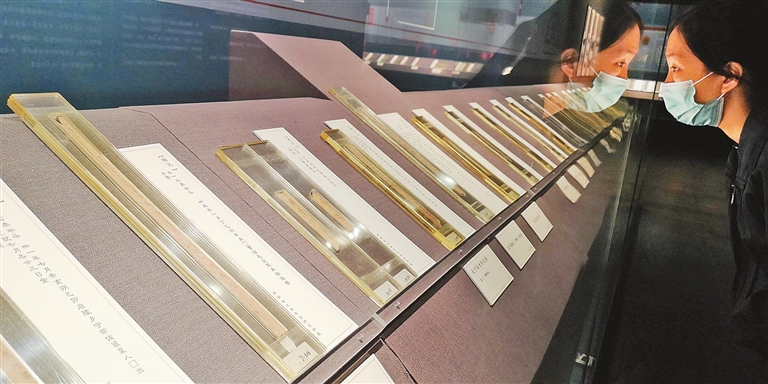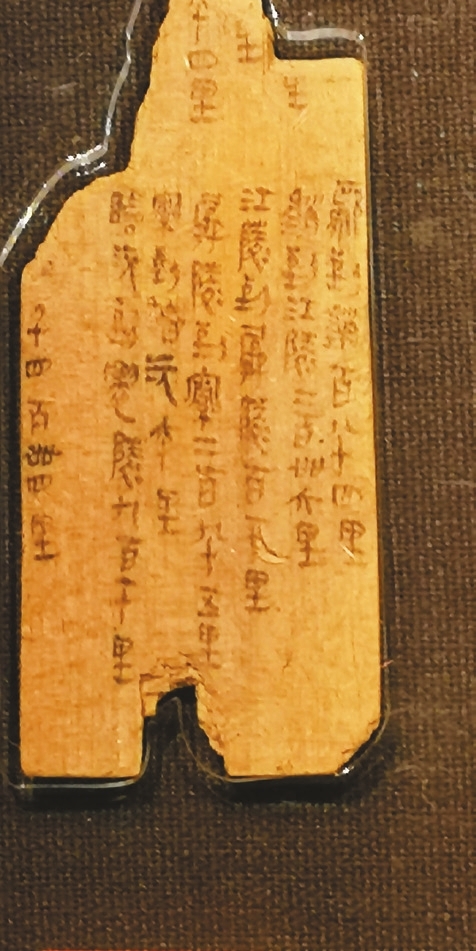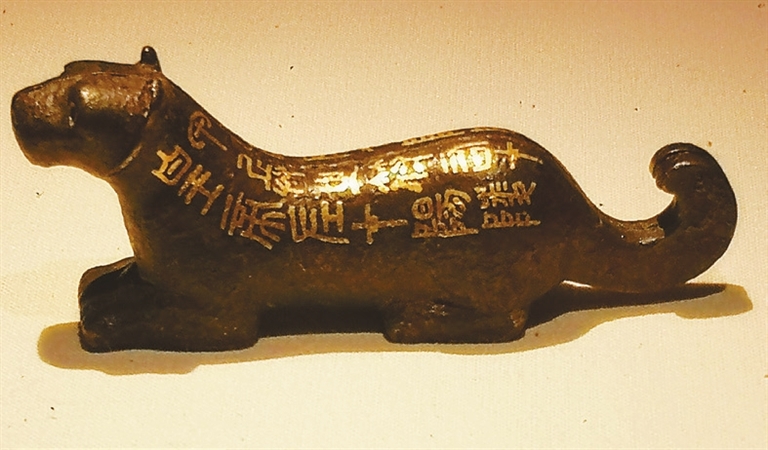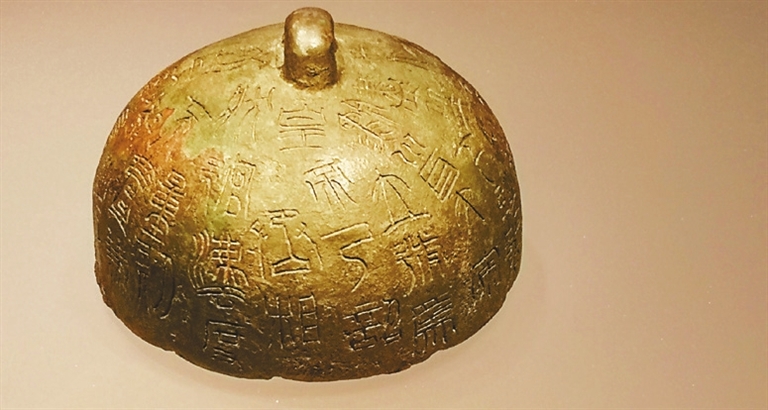



Cao Zhen caozhen0806@126.com THE great Qin Dynasty (221-207 B.C.) left the world the imposing Terracotta Warriors and thrilling legends of the first emperor that unified China. Qin’s centralized governance also greatly influenced the following dynasties, but official written records about this short-lived dynasty are only 1,000 characters until in 2002, then a large number of bamboo and wooden slips written with 200,000 characters were excavated in a pit in the Liye Ancient Town in west Hunan Province and revived the dynasty’s written history. Now, Shenzheners can see 146 Liye Qin Slips from the Hunan Provincial Institute of Archaeology in Changsha and the Liye Qin Slips Museum in Longshan County, along with 31 pieces of Qin-Dynasty artifacts from the National Museum of China in Beijing, as well as a Han-Dynasty (202 B.C.-A.D. 220) brick from the Shenzhen Museum, at the “A Tale of a Small Town” exhibition in the Shenzhen Museum’s history and folk culture outlet in Civic Center. “At first glance, the Qin slips are not as dazzling as other artifacts but their importance is no less than that of Dunhuang manuscripts. The 38,000 slips found there are like an encyclopedia for us to understand Qin history and the small town life 2,200 years ago,” said Guo Xuelei, Shenzhen Museum deputy director. According to the exhibition profile, the Liye Qin Slips are 10 times the total number of other Qin slips discovered in other parts of China and these slips document the political, economic and social aspects of Qianling County under Dongting Prefecture during the Qin rule. Liye was called Qianling in the Qin era. Qin Shi Huang, the founder of the Qin Dynasty, centralized all the political, economical and military power in his hands and carried out a prefecture and county system, in which the country was divided into 36 prefectures, under which counties were established. Texts on the Liye slips were written by officials as government archives and recorded daily work and life in Qianling from 222 B.C. to 208 B.C. Through these tiny slips and vague characters, visitors can have a glimpse into a county’s past, such as tiger meat prices, medicine prescriptions and a multiplication table to measure land and calculate taxes and crop yields. Meanwhile, every detail of the highly effective administration in the county under the Qin Dynasty is also clearly presented on the slips, which recorded officials’ schedules, work assessment, decrees and orders, household registrations and documents on land reclamation, taxation, slavery, food storage, military materials and natural disasters. The excavations in Liye Ancient Town began in 1985 and archaeologists believed the town used to be a frontier military center built by the Chu State in the Warring States period (475-221 B.C.) to defend against attacks from the Qin State. The discovery of the 38,000 Liye Qin Slips in 2002 is deemed a significant archaeological finding in China, rivaling the discovery of the Qin Terracotta Warriors in Xi’an, Shaanxi Province, in 1974. Dates: Until June 27 Hours: 10 a.m.-6 p.m., closed Mondays Booking: WeChat account “iszbwg” Venue: Shenzhen Museum (of History and Folk Culture), Futian District (福田区深圳博物馆历史民俗馆) Metro: Line 2 or 4 to Civic Center Station (市民中心站), Exit B | 
